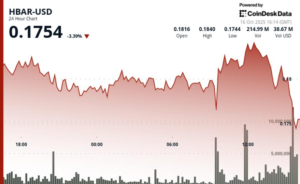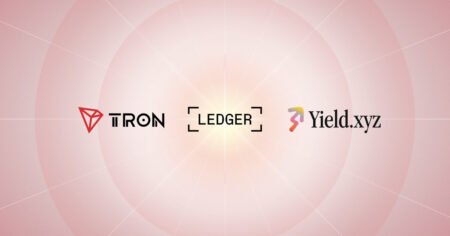Exploring Ethereum Investment: Ownership vs. Derivatives
Investing in Ethereum (ETH) today presents two primary avenues: direct ownership of ETH tokens and derivative assets like Exchange-Traded Funds (ETFs). Each path comes with its own set of advantages and disadvantages, and the choice between them largely depends on individual factors like timeline, capital availability, and risk tolerance. This article aims to help potential investors navigate these options to align with their Ethereum investment goals.
Understanding Investment Techniques: Ownership vs. Derivatives
The traditional method of investing in Ethereum is through direct ownership of ETH tokens. This approach grants users sovereignty and self-custody, allowing them to store tokens in software or hardware wallets, participate in staking for validator rewards, and engage with the broader Ethereum ecosystem. However, there are notable risks associated with direct ownership, such as extreme market volatility and custody challenges. A decline in ETH’s price can directly impact your overall portfolio. Additionally, the loss of access to private keys or recovery phrases can result in an irreversible loss of funds.
In contrast, derivatives like ETFs and contracts only reference the price of ETH, offering more sophisticated investment strategies. These instruments enable traders to take leveraged positions, amplifying potential gains—or losses. Other derivatives facilitate asymmetric bets with defined risks, providing tools to hedge against volatility and engage in short selling. While these options may seem appealing, they are not without risks. Traders must be cautious of counterparty risks associated with the issuers of these financial instruments and face the added complexity of margin trading.
Weighing the Benefits: Risk and Capital
When comparing the two investment strategies, understanding risk profiles is essential. Direct ownership of ETH carries minimal liquidation risk, allowing investors to maintain control over their assets without the pressure of margin calls or forced exits. In contrast, the complex nature of derivatives introduces multiple risk vectors. Factors like exchange insolvency can negatively impact positions, and leveraged trading heightens liquidation risks significantly. For example, a 10x leveraged position can get liquidated with just a 10% adverse price movement, even if the long-term outlook remains positive.
One of the attractive features of derivative instruments is their capital efficiency. With a modest investment and leveraged positions, traders can achieve significant returns. For instance, a $5,500 investment at 10x leverage can yield a profit of $10,000 following a 20% ETH surge, translating to a staggering 200% return. In contrast, direct ownership allows investors to purchase only about 1.2 ETH for the same capital, yielding around $1,000 in profit from the same price movement. However, stakers can accumulate ETH tokens independently of price fluctuations, benefiting from annual percentage yields (APY) ranging from 3% to 4%.
Strategic Diversification: Hedging and Shorting
Using derivatives unlocks advanced trading strategies that can go beyond simply betting on the price of ETH. Investors can employ put options to cap their downside risk while maintaining potential upside. During bear markets, shorting via perpetual futures can also be a practical strategy. Portfolio managers leverage these instruments to create market-neutral positions by holding spot ETH while shorting equivalent futures, thus collecting staking yields while mitigating risks.
Investors need to diversify their strategies based on individual goals. Advanced tactics might be suitable for active traders, while long-term holders may find greater stability in direct ETH ownership. Regardless of the path chosen, understanding the intricacies of both ownership and derivatives can significantly impact a portfolio’s performance.
Crafting Your Investment Strategy: A Tailored Approach
When deciding on the right strategy, investors are not limited to a single approach; a combination of both direct ownership and derivatives can be effective. For instance, long-term holders may benefit from staking ETH for passive rewards while cautiously utilizing derivatives, such as put options, to hedge against downturns. Meanwhile, active traders may prefer derivatives for leveraged speculation while maintaining core direct ETH positions to accumulate staking yields.
For newer or risk-averse investors, focusing exclusively on direct ownership is advisable until they become comfortable with the complexities associated with leverage and derivatives. Mastering self-custody and understanding staking rewards can build a solid foundation for future investments.
Simplified Access to Ethereum Investment
Investors looking to acquire Ethereum through direct ownership will find it easy to do so thanks to services like ChangeHero. Users can purchase Ethereum using a variety of payment methods, including credit cards, eliminating the need to relinquish custody over their funds. ETH is credited directly to the user’s crypto wallet, simplifying the investment process.
Investing in Ethereum can be both secure and flexible. Direct ownership provides stability and the opportunity for steady growth, while derivatives present tactical advantages at higher risks. Ultimately, your optimal strategic allocation should not strictly favor one method over the other but should leverage the distinctive benefits of each to achieve comprehensive portfolio management. Sophisticated investors see these two approaches as complementary, building foundational security through ownership while seizing opportunities through derivatives. As with any investment, thorough research and an understanding of your financial goals are crucial before taking any action.

















